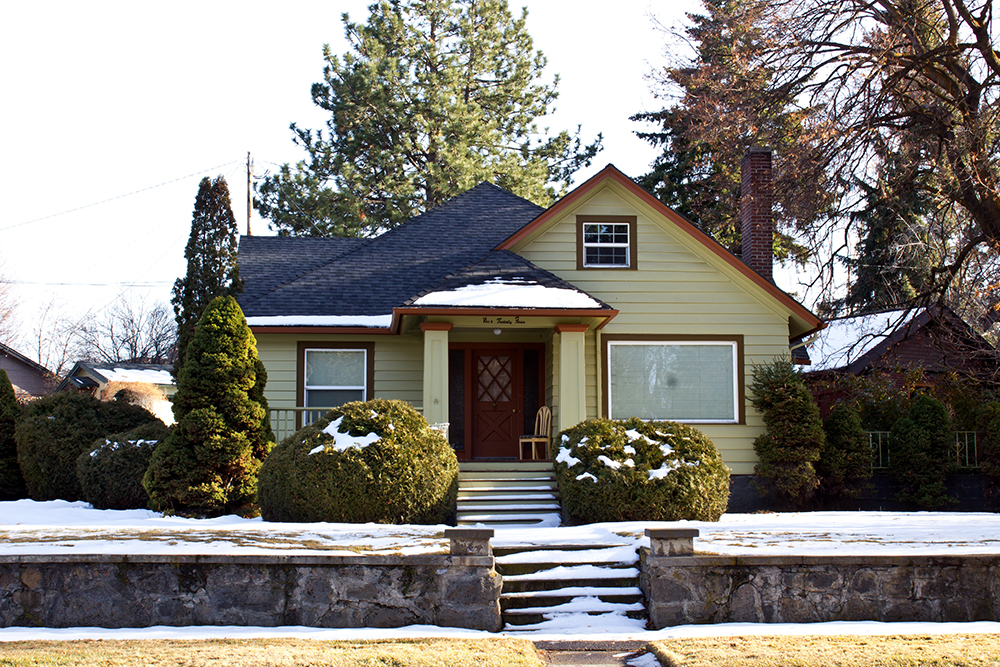
26 Jan Water Seeps Through Basement Wall
Few things strike absolute dread into any Michigan homeowner’s heart than to walk down into their basement and see water. Most basements present at least the possibility that wetness will get inside by virtue of the fact that they’re built into the ground. Water in the soil puts constant pressure on basement walls, and water follows the path of least resistance. The next think you know, you have a wet basement.
How water gets into the basement
So what causes basement leaks? Water will find its way into your basement in several ways. Look for obvious signs of a basement leak during or after rain. Both water stains on walls and pooling water on the floor are the primary signs your basement has water leaks. These include cracks in the walls or floor, at the joint where the poured concrete floor meets the wall, and through cracks in mortar joints of block or masonry foundation walls.
The most common root cause of a basement leak is pressure that has been created by water accumulating in the soil surrounding the foundation. There are two different forms of pressure that can cause issues. The first one happens during periods of heavy or persistent rain. The soil can become totally saturated, and the water has to go somewhere. This creates hydrostatic pressure, also known as water pressure, which will push the accumulated moisture and water through your basement walls and floor.
Looser packed soil around your foundation will tend to absorb more water. The home area is often flooded with rainwater from clogged gutters or downspouts, which empty their water in a pool right next to the foundation. When this soil expands, it creates lateral (or sideways) pressure up against the foundation. The result is leaking in the basement and damage to your home’s foundation.
Window wells are another cause of water leaks into the basement. If a window well is not properly installed or if the drain for it becomes clogged, the result is that the window well will fill with up water. During heavy rain, the resulting water has to go somewhere. It will go to the point of least resistance and then seep into your basement.
Surcharge
Sometimes water comes up through a backed-up floor drain or from an outside storm drain. This is called surcharge. It occurs when the drain is connected to a sanitary sewer or public storm drain system. If you suspect that surcharge is your problem, contact your city’s sewer authorities. They will test the water to determine if it comes from a sanitary sewage system. You may also need to check nearby storm drains and catch basins for blockages.
Preventing Basement Leaks
When it comes to fixing a leaky basement, there are a few steps to take to prevent leaks and keep your basement dry. One important step is to clean your gutters in the spring and the fall. When it rains, clogged gutters can overflow, and rainwater could pool around your foundation. Removing leaves and debris and installing leaf guards and downspout extenders to direct water away from the house help prevent the soil around your house from becoming saturated.
Improve the grading away from your house. It’s important to make sure surrounding soil is pitched away from the house so that water drains toward your yard and does not stay around your foundation. Building codes usually require six inches of slope for the first 10 feet of ground. Better builders will grade one foot of slope for the first six feet of ground away from the foundation. This allows for the soil to settle with time. If the grade is adequate, most rainwater will run away from the surface, and the house before it soaks too far in. An often overlooked cause of water leaks comes from the windows in your basement. Make a point to maintain and repair your window wells. Installing a fitted window well cover is an effective solution for keeping your window wells free of leaves and other debris that can clog the drain and allow water to seep into your basement.
How do you fix water seeping through walls?
If you see water dribbling into the basement through cracks or gaps around plumbing pipes, you can plug the openings yourself using hydraulic cement or polyurethane caulk. This is a simple do-it-yourself job that typically costs less than $20. Plugs work when the problem is a simple fissure or hole that water oozes through from surface runoff or wet soil. These masonry waterproofing products are applied directly to basement walls to prevent moisture from seeping through. It’s important to know that these sealants should not be applied directly over painted walls or efflorescence, which accumulates as white mineral deposits that form directly on the surface of concrete walls.
What is the best basement waterproofing method?
If the damage is significant or reoccurs, it’s then time to call in the SAS professionals. Their knowledge and experience help them to make the best recommendation for what works best in your situation. They also know local zoning and code requirements. Reputable contractors also keep up with the latest tools and technology.
Waterproofing a foundation from the outside typically involves using polymers and membranes to coat the walls’ exterior, installing a trench drain underground, or a combination of both methods. When done properly, exterior drainage is generally considered the most effective way to waterproof a basement.
The most effective way to keep water out of your basement in the long term is to install an interior drainage system that minimizes hydrostatic pressure. By installing drain tile along the joint where the floor meets the wall, where most water leakage occurs, you can capture water before it makes its way onto the basement floor. The drain tile will also collect water coming through the foundation walls. The drainage system then carries the water to a sump pump that automatically pumps the water out of your home.


No Comments